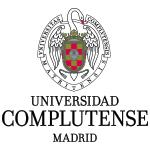A new approach for rapidly assessing the risk of Aujeszky`s disease reintroduction into a disease-free spanish territory by analysing the movement of live pigs and potential contacts with wild boar
Transboundary and Emerging Diseases publish this investigation article
August 6th, 2014
Aujeszky`s disease (AD) causes significant economic losses in the Spanish pig sector due to import trade restrictions imposed by disease-free countries. Most regions of Spain have achieved `low AD prevalence` status as a result of an intensive national AD eradication programme involving vaccination and other measures. However, to achieve AD-free status that would eliminate trade restrictions, vaccination must be stopped. For this final stage of eradication, up to date and reliable estimates of the risk of AD reintroduction are essential. Here, we propose an approach based on spatio-temporal scan statistics that the assesses risk of AD reintroduction in a disease-free territory by analysing the two most frequent risk pathways: movement of live domestic pigs and contact with wildlife reservoirs. The approach is illustrated using the case of Navarre, one of the first Spanish regions which plan to stop vaccination. Moreover, direct contacts among pig farms in Navarre were used to evaluate the potential spread of AD in the event of reintroduction. Areas at highest risk of AD reintroduction were in the southern part of the region during the second half of the year through pig movements and in the western and east-central parts of Navarre through contact with wild boars. Northern Navarre, despite having the highest density of pig farms, seems to be at low risk of AD reintroduction. Analysing the network of pig movements within Navarre revealed distinct northern and southern compartments that may be used in preventive compartmentalization strategies to reduce potential risk of AD re-infection in the scenario without vaccination. The approach described here may be extended to other regions and may be useful for guiding risk-based measures that reduce the risk of AD re-infection in a more cost-effective manner. Such analysis in Spain may allow authorities to stop vaccination in the safest possible way
Vicente-Rubiano M., Martinez-Lopez B., Sanchez-Vizcaino F. and Sanchez-Vizcaino JM..
 | Servicio de Inmunología Viral y Medicina Preventiva (SUAT). Centro de Vigilancia Sanitaria Veterinaria (VISAVET). Universidad Complutense (UCM). |
 | Departamento de Sanidad Animal. Facultad de Veterinaria. Universidad Complutense (UCM). |
